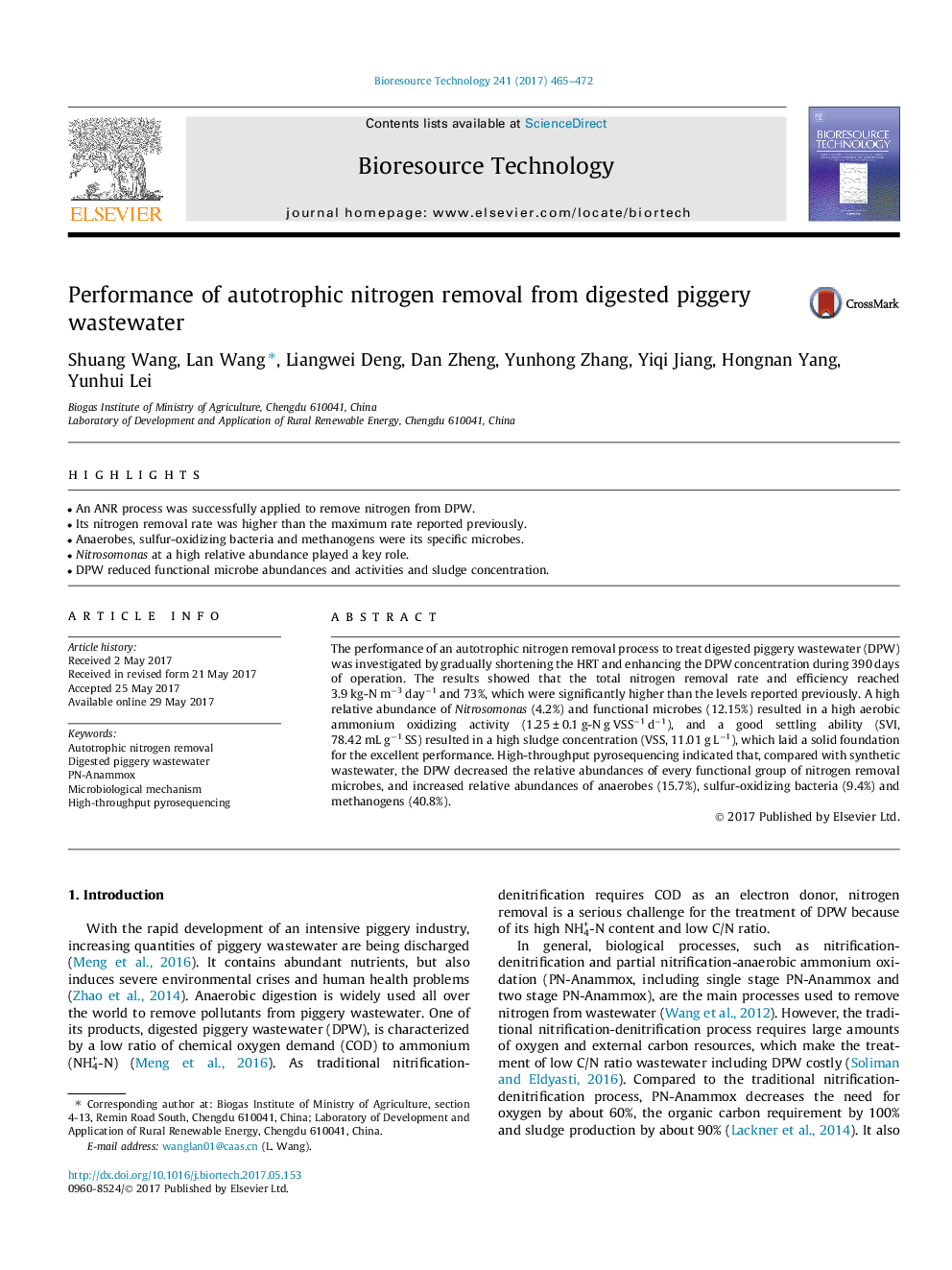| Article ID | Journal | Published Year | Pages | File Type |
|---|---|---|---|---|
| 4997018 | Bioresource Technology | 2017 | 8 Pages |
Abstract
The performance of an autotrophic nitrogen removal process to treat digested piggery wastewater (DPW) was investigated by gradually shortening the HRT and enhancing the DPW concentration during 390 days of operation. The results showed that the total nitrogen removal rate and efficiency reached 3.9 kg-N mâ3 dayâ1 and 73%, which were significantly higher than the levels reported previously. A high relative abundance of Nitrosomonas (4.2%) and functional microbes (12.15%) resulted in a high aerobic ammonium oxidizing activity (1.25 ± 0.1 g-N g VSSâ1 dâ1), and a good settling ability (SVI, 78.42 mL gâ1 SS) resulted in a high sludge concentration (VSS, 11.01 g Lâ1), which laid a solid foundation for the excellent performance. High-throughput pyrosequencing indicated that, compared with synthetic wastewater, the DPW decreased the relative abundances of every functional group of nitrogen removal microbes, and increased relative abundances of anaerobes (15.7%), sulfur-oxidizing bacteria (9.4%) and methanogens (40.8%).
Related Topics
Physical Sciences and Engineering
Chemical Engineering
Process Chemistry and Technology
Authors
Shuang Wang, Lan Wang, Liangwei Deng, Dan Zheng, Yunhong Zhang, Yiqi Jiang, Hongnan Yang, Yunhui Lei,
